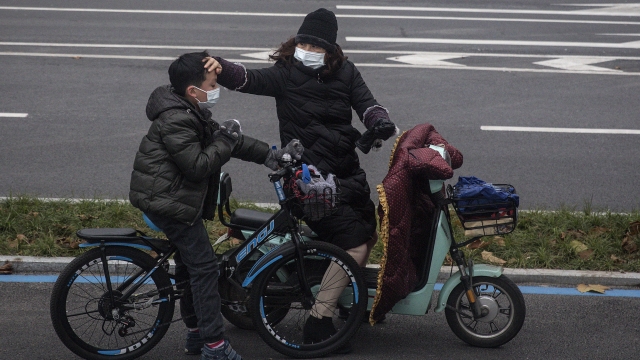As the coronavirus continues to spread, so does a wealth of misinformation about it — including false claims about people collapsing in the streets, conspiracy theories about how the virus started, and even fake cures that would cause more harm than good.
With 3.8 billion social media users around the globe — accounting for almost half of the world's population — it's easy for these panic-inducing headlines to spread. After all, a 2018 MIT study found fake news is 70% more likely to be retweeted than accurate reports.
"I think with all rumors that invoke fear, that can be a really strong driver of misinformation. And in this case, you have a kind of perfect storm of fear combined with very limited information or imperfect information due to Chinese government censorship, and, in some cases, Chinese government disinformation, and then a real gap in expertise," Peter Adams, the senior vice president of education for the News Literacy Project, told Newsy.
Because there is a strong emotional component in play with the coronavirus, Adams says misinformation can easily "short-circuit our critical thinking." So in order to help separate fact from fiction, let's discuss what's currently known about the virus.
First off, coronaviruses are a family of viruses that mostly circulate among animals and sometimes get passed on to humans.
This particular illness had never been identified before it was detected in late 2019 in Wuhan, China. Health officials are still working to determine the source of the outbreak, but the first cases were all linked to a seafood market that also sold live wild animals.
Although the coronavirus has since spread to more than two dozen countries, the majority of confirmed cases and deaths from the virus are occurring in mainland China.
Doctors confirmed the coronavirus is being spread through human-to-human transmission. But it can take a person up to 14 days after exposure to start showing symptoms, which include fever, cough and shortness of breath. People of all ages can be infected, but older people and those with pre-existing medical conditions seem to be more vulnerable.
Because the virus is new, there's no vaccine for it. But scientists are working to develop one. In the meantime, drinking bleach, eating garlic, loading up on vitamin C or rinsing your nose with saline will not prevent a person from getting infected or cure them.
"People really need to be careful about the sources of information. ... Realize that there are lots of folks out there spreading misinformation — sometimes accidentally, but sometimes for personal gain, for web traffic and sometimes for more nefarious reasons," Adams said.
The American public has been warned to not travel to China, but the risk of catching the coronavirus in the U.S. is low. As such, it's safe to visit your local Chinatown, eat at your favorite Chinese restaurants and have products shipped from China.
The CDC offered these prevention tips: Wash your hands frequently with soap and hot water, avoid close contact with people who are sick, and cover your coughs and sneezes with a tissue.


